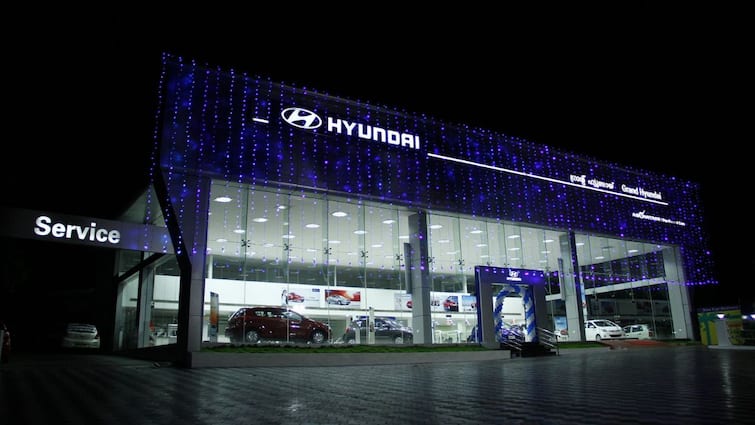Hyundai Motor’s Export Plunge: A Deep Dive
A Dramatic Shift in Exports
Hyundai Motor’s vehicle exports from its U.S. plant have taken a significant nosedive, with recent data revealing a staggering drop. In June, the Hyundai Motor Manufacturing Alabama (HMMA) managed to export just 14 vehicles, contrasting sharply with 1,303 units exported in June of the previous year, and 2,386 vehicles in May. This dramatic decline marks a milestone for HMMA, as it is the first time since April 2020—during the initial phases of the COVID-19 pandemic—that export numbers have dipped below 100 units.
The Context of the Decline
Last year, HMMA exported a total of 22,600 vehicles, making the recent statistics particularly alarming. Industry insiders attribute this sharp decline to Hyundai’s ongoing production realignment strategies, aimed at navigating the turbulent waters of rising tariff tensions. The U.S. government’s imposition of a hefty 25 percent duty on all imported vehicles has prompted Hyundai to rethink its export strategy, making substantial adjustments to its production practices.
Realigning for Domestic Demand
Faced with growing tariff-related pressures, Hyundai is reportedly contemplating a shift in focus from exporting vehicles to meeting domestic demand. The company, which exported 637,000 vehicles to the United States last year alone, is considering redirecting some U.S. production outputs to the local market rather than sending them overseas. This move highlights a strategic adaptation to both market demands and external economic conditions.
Boosting Local Production
To further mitigate the impacts of U.S. tariffs, Hyundai has announced plans to enhance its production capacity within the United States. The strategy involves ramping up output at its Alabama and Georgia plants. Simultaneously, Hyundai aims to cut back on the production of models intended for the U.S. market at Kia Corp.’s Mexican facility, effectively consolidating its operations to better serve local needs.
An official from Hyundai elaborated on this approach during an April earnings call, noting, "In order to minimize the impact of U.S. tariffs, we have implemented measures to shift Tucson production from Mexico to HMMA and moved HMMA’s Canadian-bound production to Mexico."
The Tucson Case Study
One significant example of this realignment is the production of the Tucson crossover. In February, around 2,100 units were shipped from Mexico; however, by March, that number had dwindled to 522, and zero units were exported in April, showcasing a rapid decline in output intended for export.
Broader Market Implications
The repercussions of these changes extend beyond Hyundai alone; South Korea’s overall automobile exports have also experienced setbacks. Government statistics indicate a slight decline in exports, especially to the United States, which saw a substantial drop following the imposition of rigorous tariffs. The value of automobile exports fell to $6.53 billion in April, reflecting a 3.8 percent decrease compared to the previous year.
Numbers Don’t Lie: Regional Impact
When delving deeper into the specifics, exports to North America saw a notable decrease of 17.8 percent year-on-year, valued at $3.36 billion, with shipments to the U.S. alone plunging 19.6 percent to $2.89 billion. These figures serve as a testament to the broader landscape of challenges facing not only Hyundai but the entire South Korean automotive industry.
The Bigger Picture
In summary, Hyundai’s recent export challenges underscore a significant shift in the automotive landscape, significantly driven by external economic pressures and changing market dynamics. The company’s strategic adaptations reveal a deep commitment to staying resilient amid evolving trade complexities, and the unfolding situation is one to watch closely for both industry experts and consumers alike.


